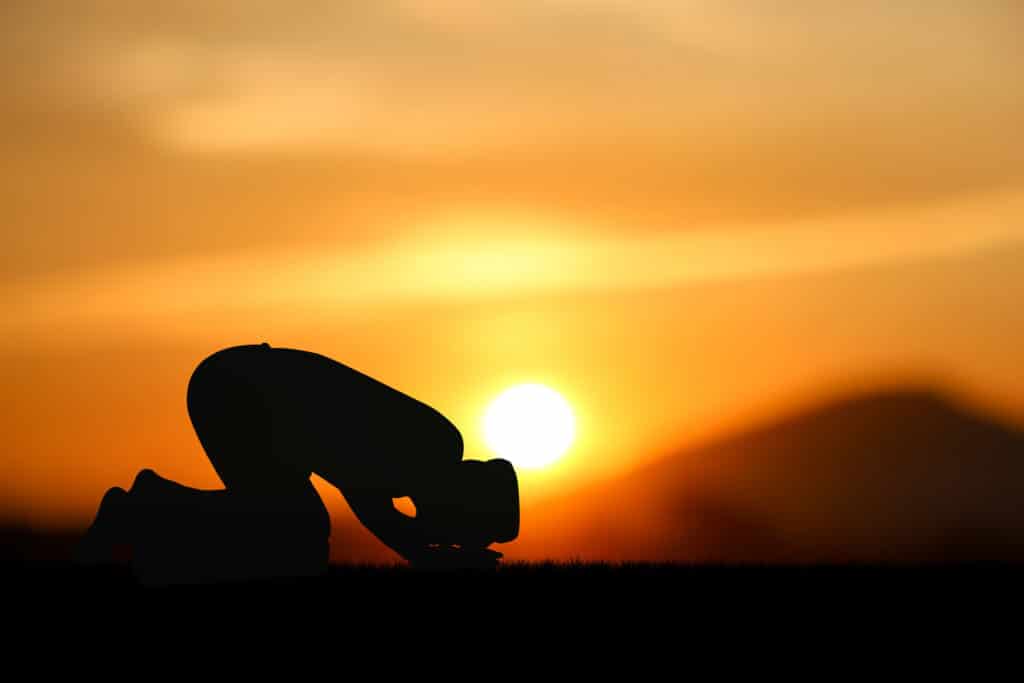Overview of Salah

The Prophet Muhammad, peace and blessings of Allah be upon him, once asked his companions, “If someone took a bath five times a day in the river flowing past his house, would there remain any dirt on his body?” They replied, “No dirt would remaining him, O Messenger of Allah.” The Prophet, peace and blessings be upon him then said, “Such is the example of the one who offers salah five times a day. Allah removes the dirt of his faults from him.”
Every traveler who is sincere in their faith accepts the five daily prayers as the order of Allah, the practice of the Prophet, peace and blessings be upon him, and an integral part of daily life. The salah is a necessary, vital, and functioning reality. It offers the possibility of separation from attachment, the realization of Divine Truth, forgiveness, peace, protection, and security. It provides a normal rhythm to daily life, attuned to the natural rhythms of all life on Earth, as well as to the movement of the planet itself, the sun, the moon, and the stars. It can be performed in any clean place, with other people or alone, privately or publicly. Its blessings grow and multiply with time until the grateful worshiper wonders how he or she ever lived without it. The salah is an obligation on all sane, adult (past the age of puberty) Muslims. Men and women perform the salah in the same way.
How Salah is Organized
Each salah of the day has a name and a span of time. It is best to pray at the beginning of each time, but salah can be made at any time during each span. The salah, if missed, can be made up later, but the blessing of its time has passed. The salah of each time has a number of cycles called rak’ah. The Qur’an recited in each salah is recited out loud when the sun has set, and silently when the sun is up.
There are many fine details, inner and outer, to the performance of salah. One may also find slight differences in the way worshipers pray, depending on the particular school of jurisprudence they may follow. Our guide Sidi recommends we follow the Shafi’ school.
Times of Salah
The times of salah are fixed by the Earth relative to the Sun. The day begins just after sunset, with the salat al-maghrib. When it becomes fully dark with no light remaining in the sky, it is the time of salat al-‘isha’. At the first sign of the crack of dawn, when the fist hues of light begin to to be seen in the sky (before sunrise), salat al-fajr begins and lasts until the sun breaks the horizon. Salat al-dhuhr begins when the sun is just past its zenith, and continues until the shadows are twice the height of their origin. This is the time of salat al-asr, which continues until the sun sets and we begin the whole cycle again with salat al-maghrib. One should refrain from praying salah during the time of sunset, sunrise, or at high noon. We are not sun worshipers.
The Direction of Salah
The direction to stand facing for the salah is called the qibla. All Muslims in the world turn from wherever they are pray toward the Ka’ba in Mecca. This direction is based on your location on the Earth relative to Mecca via the shortest distance. The times for each prayer change every day but the qibla remains fixed for your location.
In our modern times, there are a number of smartphone apps, as well as online resources that will calculate the proper prayer times and direction for your location for each salah. You can purchase a special alarm clock that you can program to sound the adhan (call to prayer) precisely at the beginning of the time for each prayer.
The above content, an introduction to the Five Daily Prayers, was provided with the permission of the Green Mountain School and is an excerpt of a small book titled Learning the Salah. You can order this book and many other publications written by the late Shaykh Nooruddeen Durkee at greenmountainschool.org.